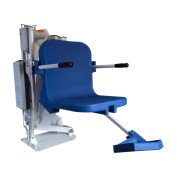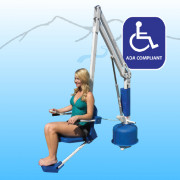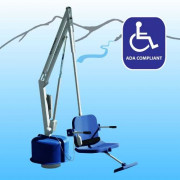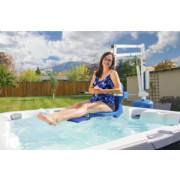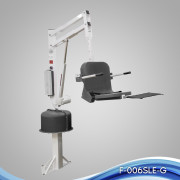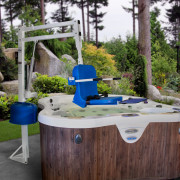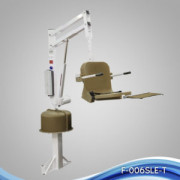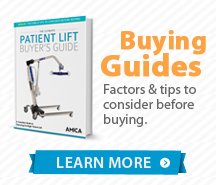-

Ranger 2 Pool Lift - No Anchor - 350 lb - Custom Color Powder Coat, Custom Trim
Model: F-RNGR2-C Manufacturer: Aqua Creek $4,595.00
$4,595.00
-
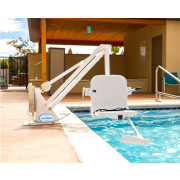
Ranger 2 Pool Lift - No Anchor - 350 lb - White with White Seat
Model: F-RNGR2-W Manufacturer: Aqua Creek $4,595.00
$4,595.00 -
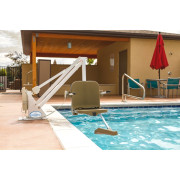
Ranger 2 Pool Lift - No Anchor - 350 lb - White with Tan Seat
Model: F-RNGR2-T Manufacturer: Aqua Creek $4,595.00
$4,595.00 -
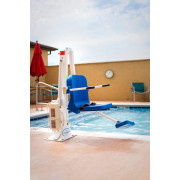
Ranger 2 Pool Lift - No Anchor - 350 lb - White with Blue Seat
Model: F-RNGR2 Manufacturer: Aqua Creek $4,595.00
$4,595.00
-
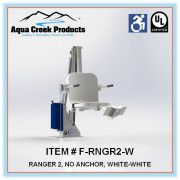
Ranger 2 Pool Lift - No Anchor - 350 lb - White with Gray Seat
Model: F-RNGR2-G Manufacturer: Aqua Creek $4,595.00
$4,595.00 -

Aqua Creek Admiral - ADA Compliant 450lb Pool Lift - White with Tan Seat
Model: F-ADMRL-T Manufacturer: Aqua Creek $5,595.00
$5,595.00
-

Aqua Creek Admiral - ADA Compliant 450lb Pool Lift - White with Blue Seat
Model: F-ADMRL Manufacturer: Aqua Creek $5,595.00
$5,595.00 -

Aqua Creek Admiral - ADA Compliant 450lb Pool Lift - White with Gray Seat
Model: F-ADMRL-G Manufacturer: Aqua Creek $5,595.00
$5,595.00 -

Aqua Creek Admiral - ADA Compliant 450lb Pool Lift - Custom Powder Coat, Custom Seat
Model: F-ADMRL-C Manufacturer: Aqua Creek $5,595.00
$5,595.00
-
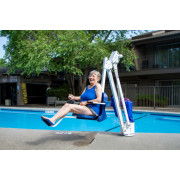
Aqua Creek Mighty 400 Pool Lift, No Anchor, Custom Powder Coat and Seat Colors, 400lb Capacity
Model: F-MTY400-C Manufacturer: Aqua Creek $6,689.00
$6,689.00
-
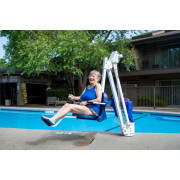
Aqua Creek Mighty 400 Pool Lift, No Anchor, White Powder Coat, Blue Seat, 400lb Capacity
Model: F-MTY400 Manufacturer: Aqua Creek $6,689.00
$6,689.00 -
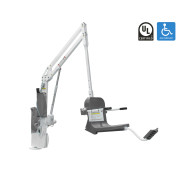
Aqua Creek Scout Excel ADA Compliant Pool Lift - White/Gray - no Anchor
Model: F-SCTXL-G Manufacturer: Aqua Creek $6,689.00
$6,689.00 -
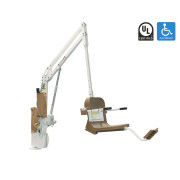
Aqua Creek Scout Excel ADA Compliant Pool Lift - White/Tan - no Anchor
Model: F-SCTXL-T Manufacturer: Aqua Creek $6,689.00
$6,689.00
-
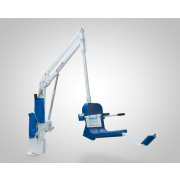
Aqua Creek Scout Excel ADA Compliant Pool Lift - White/Blue - no Anchor
Model: F-SCTXL Manufacturer: Aqua Creek $6,689.00
$6,689.00 -
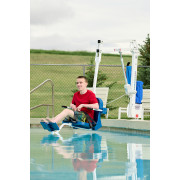
Aqua Creek Scout Excel ADA Compliant Pool Lift -Custom Color Base, Custom Color Trim -no Anchor
Model: F-SCTXL-C Manufacturer: Aqua Creek $6,689.00
$6,689.00 -
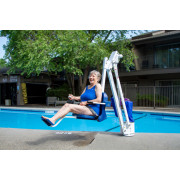
Aqua Creek Mighty 400 Pool Lift, No Anchor, White Powder Coat with Gray Seat, 400lb Capacity
Model: F-MTY400-G Manufacturer: Aqua Creek $6,689.00
$6,689.00
-
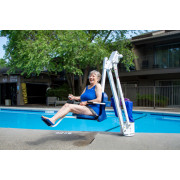
Aqua Creek Mighty 400 Pool Lift, No Anchor, White Powder Coat, Tan Seat, 400lb Capacity
Model: F-MTY400-T Manufacturer: Aqua Creek $6,689.00
$6,689.00 -
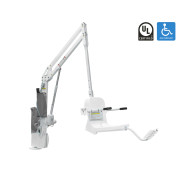
Aqua Creek Scout Excel ADA Compliant Pool Lift - White/White no Anchor
Model: F-SCTXL-W Manufacturer: Aqua Creek $6,689.00
$6,689.00 -
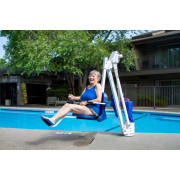
Aqua Creek Mighty 400 Pool Lift, No Anchor, White Powder Coat, White Seat, 400lb Capacity
Model: F-MTY400-W Manufacturer: Aqua Creek $6,689.00
$6,689.00
-
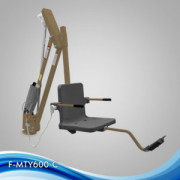
Aqua Creek Mighty 600 Pool Lift, No Anchor, Custom Powder Coat Base, Custom Seat, 600lb Capacity
Model: F-MTY600-C Manufacturer: Aqua Creek $7,679.00
$7,679.00 -

Aqua Creek Mighty 600 Pool Lift, No Anchor, White Powder Coat, Gray Seat, 600lb Capacity
Model: F-MTY600-G Manufacturer: Aqua Creek $7,679.00
$7,679.00
ADA Law
Providing equal opportunity to people with disabilities is the fundamental principle of the Americans with Disabilities Act. This publication is designed to help title II and title III entities understand how new requirements for swimming pools, especially existing pools, apply to them.
People with disabilities were, for too long, excluded from participating in many recreational activities, including swimming. The revised 2010 Standards change that. For the first time, the 2010 Standards set minimum requirements for making swimming pools, wading pools, and spas (pools) accessible. Newly constructed and altered pools must meet these requirements. Public entities and public accommodations also have obligations with respect to existing pools. State and local governments must make recreational programs and services, including swimming pool programs, accessible to people with disabilities. Public accommodations must bring existing pools into compliance with the 2010 Standards to the extent that it is readily achievable to do so.
The requirements for newly constructed and existing pools will ensure that, going forward, people with disabilities can enjoy the same activities—a community swim meet; private swim lessons; a hotel pool—at the same locations and with the same independence, ease, and convenience as everyone else.
Is your business a Title III entity?
Whether your business even has to worry about the fixed pool lift requirements depends on whether you are a Title III entity. Title III prohibits discrimination on the basis of disability by places of public accommodation, including many private businesses, and the rules place accessibility requirements on such businesses. Title III entities are businesses such as a hotel and motel, health club, recreation center, public country club or other businesses that have swimming pools, wading pools and spas. If your business falls under that category, the 2010 Standards apply.
What is this pool lift requirement?
The 2010 Standards require that newly constructed or altered swimming pools, wading pools, and spas have an accessible means of entrance and exit to pools for those people with disabilities, as defined by the ADA. However, providing accessibility is conditioned on whether providing access through a fixed lift is “readily achievable.” The technical specifications for when a means of entry is accessible are available on the DOJ website. Other requirements are based on pool size and include providing a certain number of accessible means of entry and exit, which are outlined in Section 242 of the Standards. However, businesses should consider the differences in application of the rules depending on whether the pool is new or altered, or whether the swimming pool was in existence before the effective date of the new rule. Full compliance may not be required for existing facilities; Sections 242 and 1009 of the 2010 Standards outline such rules and exceptions.
What exactly is a “fixed pool lift”?
A fixed lift is one that is affixed to the pool deck or apron in some fashion. Conversely, a non-fixed lift is not affixed in any way. Many businesses with pools have purchased or own portable (i.e. non-fixed) pool lifts. If that portable lift is affixed to the pool deck, then it could be considered a fixed lift and compliant under the rules. Thus, owners of a portable lift may be able to comply with the ADA requirements by affixing lifts to the pool deck or apron. Moreover, owners of such portable lifts will be required to affix the lifts as a means of compliance if it is readily achievable. This exception for certain non-fixed lifts stemmed from confusion over the new regulations, spurring the DOJ to grant exceptions to certain entities that purchased an otherwise compliant non-fixed lift before March 15, 2012. Those exceptions may apply only if non-fixed lifts comply with the 2010 Standards and if the owners keep the portable lifts in position for use at the pool and operational during all times that the pool is open to guests.
What is the “readily achievable” standard?
The ADA does not require providing access to existing pools through a fixed lift if it is not “readily achievable”, meaning that providing access is easily accomplishable without much difficulty or expense. The DOJ has specified that this standard is a flexible, case by case analysis, so that the ADA requirements are not unduly burdensome. However, businesses cannot simply claim that installing a fixed pool lift is not readily achievable. Rather, factors such as the nature and cost, the overall financial resources of the business and the effect on expenses and resources are all considered and evaluated when determining the application of the standard. For some businesses immediate compliance may seem impossible because of, for example, the backorder on pool lifts. Nonetheless, businesses are still obligated to comply with the requirements of the 2010 Standards through other means, as specified in the Standards.
Should your business shut the pool down if you haven’t complied?
If accessibility is not readily achievable, businesses should develop plans for providing access into the pool when it becomes readily achievable in the future. Businesses that are worried about their current status of compliance should consult with legal counsel or call the ADA Information Line to speak with an ADA Specialist regarding any compliance questions.
Though compliance with the pool lift requirements may seem onerous, it is necessary to prevent legal and financial liability on the part of a Title III covered business. These requirements also potentially produce tax benefits under the IRS Code, insurance premiums, ongoing maintenance and accessibility costs and obligations and staff training requirements, all of which are reasons to take compliance seriously.





